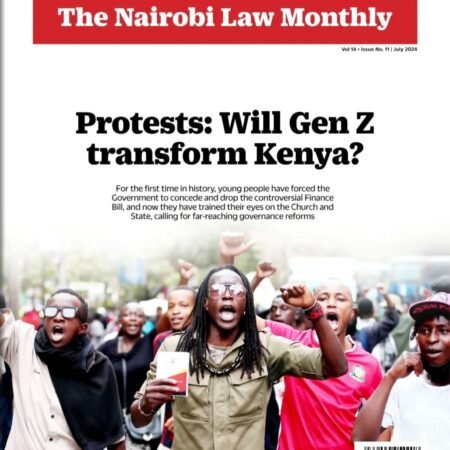By Nimo Kering
Distributed ledger technology (DLT) has paved way for innovative applications in the legal sphere. Blockchain technology has no doubt made a footprint in modifying the nature of legal work. By way of example, blockchain technology has advanced the use of smart contracts, management and recording of current and historical property data, and upgrading of client data security.
-
Sale!
Download Nairobi Law Monthly Magazine July 2024 Edition
Downloads Original price was: KShs200.00.KShs100.00Current price is: KShs100.00.
Following problems in the applications of established DLTs, Dr Leeman Baird spearheaded the invention of the hedera platform. Hedera is built on the hashgraph consensus algorithm therefore providing a new platform for distributed consensus. It is argued that the hashgraph consensus algorithm provides “a near-perfect efficiency in bandwidth usage and consequently can process hundreds of thousands of transactions per second in a single shard.” This brings an immediate comparison between the efficiency of hedera and blockchain generally and on the advancement of legal technology specifically.
Prior to delving into the application use case of the new platform, it is important to understand how hedera works. It is pegged on five major principles as described in its whitepaper authored by Dr Baird, Mance Harmon, and Paul Madsen; these are performance, security, governance, stability and regulatory compliance. The hedera governance policy tool introduces a unique aspect to DLTs as it encompasses a governing council. While the governing council is established to ensure the cyberspace is trusted, secure and ideally has code space integrity, the hedera platform remains decentralised. Another intriguing aspect of the hedera platform is in respect to performance. The platform is, inter alia, inexpensive and avoids the unnecessary intensity of proof-of work (which has been one of the shortcomings of blockchain).
The hedera platform is built on a form of Byzantine-Fault Tolerant consensus known as asynchronous Byzantine-Fault Tolerance (aBFT) aptly discussed in the whitepaper. The network is pegged on keeping an honest consensus which makes the system attack-resistant and secure. Hedera efficiently verifies transactions prior to these transactions being added to the public ledger.
For some time now, Ethereum has been fronted as the best DLT with respect to execution of smart contracts. Among the key pillars in this regard was the immutability of the system. Hedera, however, provides a different approach as it supports controlled mutability. This means that parties are allowed to vary clauses in specific circumstances and editing of apparent errors. Smart contracts do not only encode property transactions but also performance of operations such as transfer of digital currencies and other valuable assets.
With such transactions, it is possible that situations not anticipated may arise which would require some form of quick and flexible fix. Smart contracts built on blockchain (and Ethereum) cannot be modified. This is, in my opinion, a great advantage of the hedera platform. Mutability, under specified conditions, ought to be preserved especially in the application of real-world transactions.
Other than smart contracts, the controlled mutability aspect of the hedera platform invites innovative use case applications. Take, for instance, an application which can record data with a view of analysing judges and their respective court decisions. It is also possible to input legal actions decided by each court to somewhat predict which judge and court, for example, is likely to certify an application as urgent. The ability to edit and amend information keyed in to reflect different set of circumstances is vital in receiving more accurate feedback in such an analysis. This is well captured in hedera.
Data analysis is becoming so dynamic that we may even consider including advocates’ conduct for purposes of preparation and predictability in court. For instance, a matter is coming up for hearing and one appears against a particular advocate. Are they likely to adjourn on account of having recently taken over the matter, illness or even not having witnesses present?
There have been a couple of smart contracts deployed off the hedera network. The network provides a guide for users to create smart contracts and follow it up all the way through to execution. While disruptive technology is taking over the all markets, it will be interesting for lawyers to follow the development of DLTs in the legal space, specifically hedera. (


